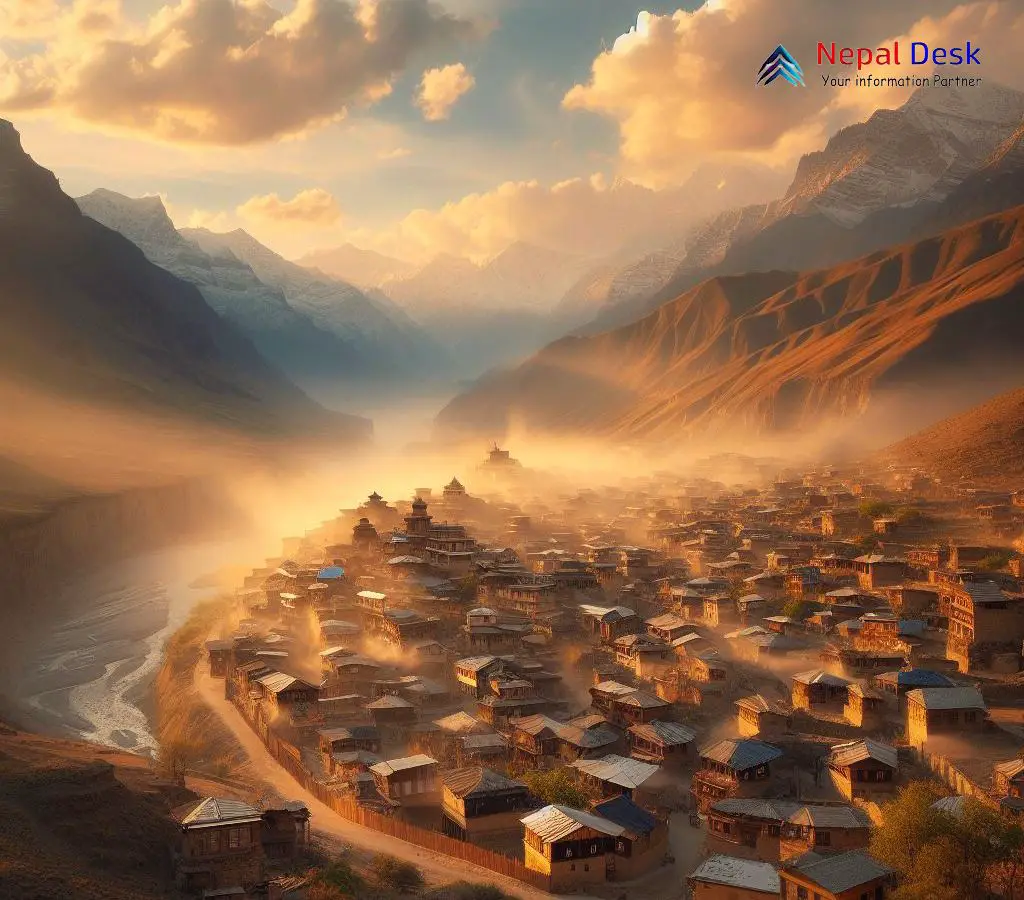Mustang's Appeal to Lift Tourist Restrictions for Economic Revival
Published Date

Published Date
Mustang's local divisions request authorities including PM for removal as prohibited areas for tourist, citing economic impacts and wellbeing;
⏱ 2 min read
Three local administrative divisions within the Mustang district have formally requested that the Nepalese government remove their territories from the list of prohibited areas for foreign visitors.
Presently, the government has classified Lo Manthang, Lo-Ghekar Damodarkund, and Varagung Muktikshetra in Mustang as restricted zones. The local authorities argue that this restriction negatively impacts tourism, and consequently, their economic wellbeing, thus urging for its repeal.
Tashi Norbu Gurung, Chairperson of the Lo Manthang rural municipality, asserts that the high permit fees for restricted areas have resulted in a significant decline in tourist influx, adversely affecting their livelihoods and businesses.
Backed by local residents, hotel owners, and village councils, Gurung – along with the chairs of Lo-Ghekar Damodarkund and Varagung Muktikshetra – has presented a petition to several high-ranking officials. The recipients include Prime Minister Pushpa Kamal Dahal, Home Minister Narayankaji Shrestha, Chief Minister of Gandaki Province Surendraraj Pandey, and Minister of Forest and Environment Birendra Kumar Mahato. The petition requests the removal of Upper Mustang from the list of prohibited areas.
To visit Upper Mustang – part of the Annapurna Conservation Area Project (ACAP) – foreign tourists must pay a fee of $500 for a 10-day stay. If their visit extends beyond this duration, an additional fee of $50 per day is levied. Similar restrictions apply to specific regions in Manang and Gorkha districts.
Rinjin Gurung, Chairperson of Varagung Muktikshetra, adds that due to its designation as a prohibited area, tourists face difficulties accessing it, causing negative repercussions to all local stakeholders.
Data from the Annapurna Conservation Area Management Project shows that out of 71,707 tourists who visited Mustang in 2022/23, merely 3,388 ventured into the semi-restricted region of Upper Mustang.
First opened for tourism in 1992, the government has declared Upper Mustang – which shares a border with the Chinese autonomous region Tibet – as a semi-prohibited zone. Vikal Sherchan, a member of the Gandaki Provincial Assembly, suggests that it is essential to establish fees and systems that cater to tourists from diverse economic backgrounds and demographics.
Upper Mustang is situated in the Nepalese trans-Himalaya and attracts visitors due to its barren mountain landscapes, ancient Tibetan cultural heritage featuring monasteries, chortens, and historically significant palaces. Furthermore, Mustang is renowned for trekking opportunities and pilgrimage sites such as Muktinath. The region boasts various hotels catering to both luxury and budget travelers, as well as everything in between.
